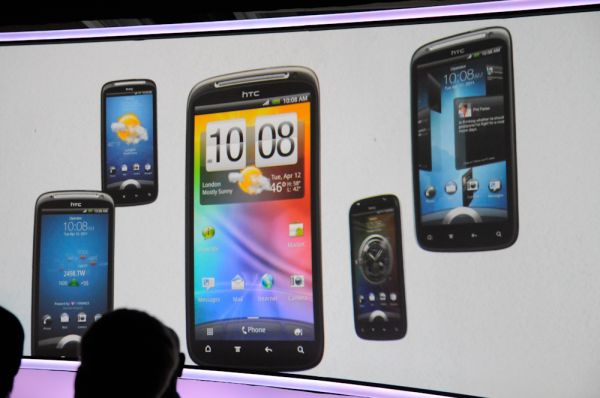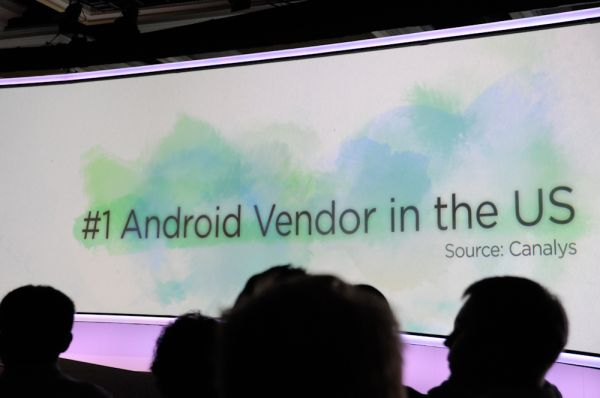HTC Chief Executive Peter Chou took the stage at Qualcomm’s Uplinq conference in Sad Diego o talk about Android and Windows Phone 7 and HTC is the top global supplier of Android phones. Chou went on to claim that his company is the largest Android developer behind Google, which creates and releases source code for the Android operating system and confirmed HTC’s commitment to also produce Windows phones, reminding conference attendees that the company has a long history of handling hardware for several Windows Mobile operating systems……….
HTC Chief Executive Peter Chou claims that his company is the largest developers of Android after Google and made the statement while speaking at the conference Upling Qualcomm in San Diego, California. First up was HTC CEO Peter Chou, who started by taking a look at HTC’s history in mobile and gave a very high level tour of a number of very popular devices. Devices like the first iPaq, the HTC Universal, HTC Touch, HTC G1 and HTC EVO were given as key landmark devices in the history of HTC since its first devices in 1999.
The emphasis everyone has placed on the mobile revolution message is that growth isn’t slowing down, it’s accelerating.
Peter reiterated some stats – in 2010, HTC shipped 25 million smartphones, and in the first quarter of 2011 shipped 9.7 million smartphones. HTC claims it is the top five smartphone brand in the world, and in some markets number two and three. Just like Paul yesteday, Peter reiterated that mobile is becoming a lifestyle and contributing to societal change, a definite allusion to recent social events in Egypt. The next major topic was HTC Sense. HTC believes strongly that its Sense UI is more than just a skin and contributes to class leading user friendliness, that makes it more intuitive and contributes to the overall holistic experience. The majority of enthusiasts would disagree with, but for the vast majority of the market, there’s something to be said for Sense.
Peter talked about what’s different in the new Sense UI. Revamped smoother animations and a completely different lock screen with at-a-glance information are the two major features. The idea behind the new lock screen is very similar to the WP7 glanceable information paradigm, namely that the most frequently accessed quick information should be presentable without having to dive into applications and then back out. HTC and OnLive entered into a partnership earlier this year and showed off a video of the HTC Flyer working as a thin client for the mobile gaming platform. It wasn’t stated whether the latency being shown in the video was the result of the Flyer being connected over WiFi or cellular connectivity, where there’s considerably more latency.
Though HTC has had one of the most active Android lineups, starting with their release of the first ever Android phone, the G1, Peter reiterated that HTC remains committed to Windows Phone 7. Though HTC has become a top Android vendor in the US, it’s important to give users choice and have a diverse OS portfolio if you’re in the handset manufacture business.
Microsoft and HTC go way back to the original Pocket PC and later Windows Mobile days, and it’s clear that the relationship hasn’t taken a back seat.
The real news out of Peter’s keynote was the announcement of HTC Dev. HTC Dev is the name implies HTC’s own developer platform, and enables Android developers to build applications and experiences tailored for HTC Sense enabled phones. HTC OpenSense is the SDK which will allow developers to integrate into the Sense UI framework and deliver a Sense look and feel in applications, to maintain consistency, and also do things like access the Sense APIs for contact management, social feeds and similar.
On the hardware side of things, OpenSense gives developers a common platform for accessing hardware that’s unique to HTC devices, for example the HTC Flyer‘s tablet pen. HTC Dev isn’t launched yet, but users can sign up to be notified and see a brief overview of the whole program, here. HTC gave examples of Linked-in building a contact merge application using OpenSense, and Picassa building tying into Sense’s gallery all using Sense APIs. In addition, a third party HTC Flyer application leveraging the pen was shown off. HTC was scant on any more detail about what all will be possible with both the OpenSense SDK through HTC Dev.
[ttjad keyword=”wp-7″]










